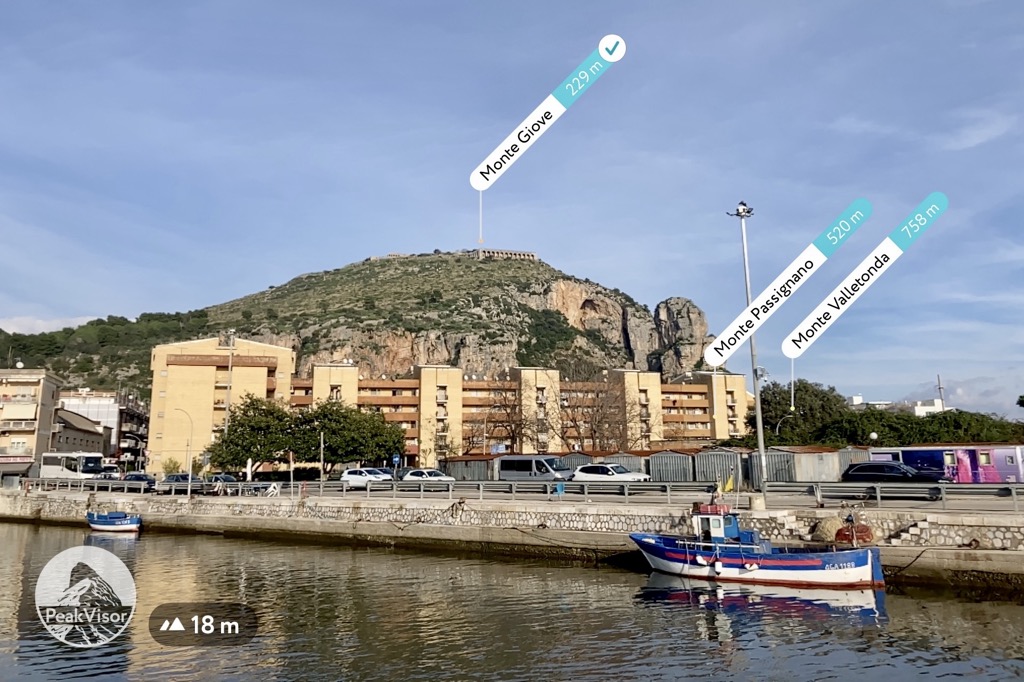Get PeakVisor App
Sign In
Search by GPS coordinates
- Latitude
- ° ' ''
- Longitude
- ° ' ''
- Units of Length

Yes
Cancel
Share ×

Scan the QR code and open PeakVisor on your phone
❤ Wishlist ×
Choose
Delete
The Temple of Jupiter Anxur Natural Monument is one of 54 such natural areas in the Lazio region of Italy and one of 110 in total, including other types. The main feature of the area, given its name, are the ruins of an ancient Roman temple in honor of the god Jupiter built in the 1st–2nd centuries BC on Monte Giove (229 m / 751 ft), which is the highest and the most prominent peak of an area. It is located on the coast of the Tyrrhenian Sea and offers stunning views of it for tens of kilometers (miles), as well as many other natural and architectural attractions. Several hiking routes lead deep from the temple to the surrounding Ausoni Mountains, to which it belongs. In total there are 2 named peaks in Monumento naturale Tempio di Giove Anxur (in Italian).
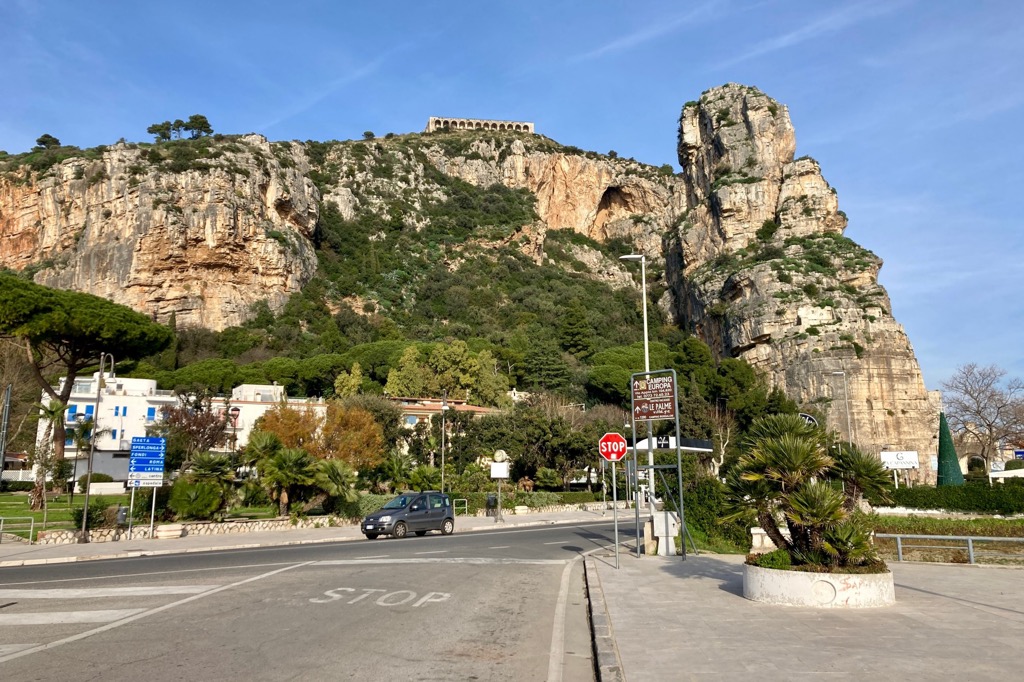
The natural monument, which was founded relatively recently in 2000, is named after the god Jupiter. This was the chief deity in the pantheon of pagan gods of the Romans, before Christianity. He ruled the heavens, thunder and lightning, and the whole world. His counterpart in Greek mythology is Zeus.
The word Anxur means “young” in the language of the Volski tribe, the largest one in the area south to Rome, which inhabited almost the entire coast to Naples, before their incorporation into the Roman Empire. This was also their name for the town from which Terracina grew, in which the monument is located today.
The modern name of the city, in turn, which reads and translates as “China Land,” actually means most likely “Land of the Dinner / Supper.” "Cina" is a modified Italian "cena". The name goes back to the local tradition of eating lunch on the ground rather than at a set table during various works like harvesting olives.
The Temple of Jupiter Anxur Natural Monument is located in Terracina in the province of Latina in the Lazio region. It is a major resort town on the Tyrrhenian Sea coast between Rome and Naples.
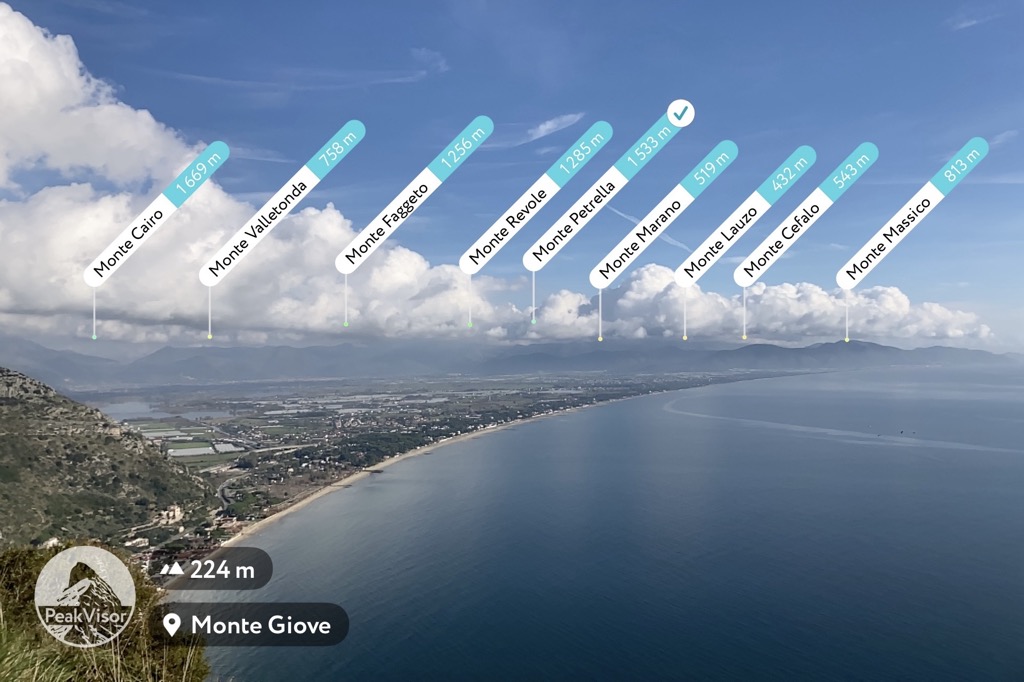
In particular, it is located on Mount Monte Giove (229 m / 751 ft) also known as Monte Sant’Angelo, which should not be confused with the namesake mountain of 1,402 m (4,599 ft) high above the town of Formia south along the coast in the Monti Aurunci Nature Park. Mount Giove literally overhangs the town and is therefore the main natural attraction of Terracina. It also comes right up to the seas blocking the shore passage, which is why historically it is also an important defensive point. Now there is no problem with the passage—there is a road along the coast.
The top of the limestone mountain, which once has a summit, was specially leveled for the construction of the temple. Limestone, as a soft material in comparison with others, allows us to do it. Today the mountain looks like a plateau.
The views from the top are spectacular on all sides:
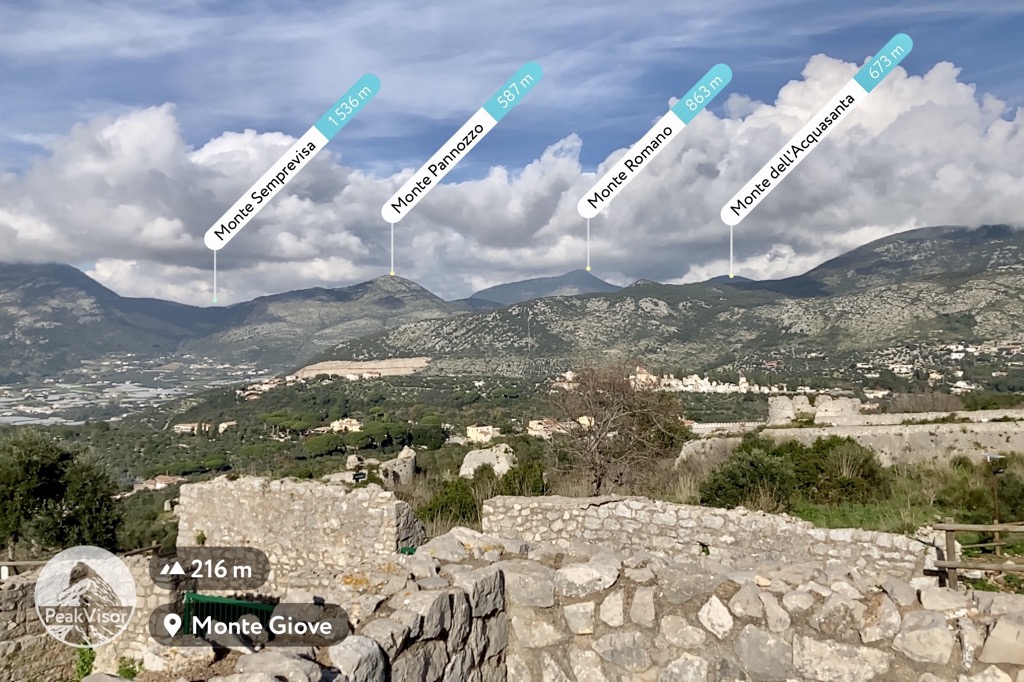
But that’s not all the natural features: just below Monte Giove is the second named mountain of the natural monument, Pisco Montano (100 m / 328 ft). It is known and loved by locals no less, thanks to its unusual shape. It is a huge rock, which looks like a giant column, one of the many that support ancient Roman and Greek temples like the Temple of Jupiter Anxur, we are exploring.
Finally, the temple itself is only part of the monument. In fact, almost nothing is left of it except the base. Beneath it is an impressive gallery called “cryptoporticus” with twelve arches, visible from the city. In addition, there are also the remains of a smaller temple where the goddess Venus was worshiped, and the remains of the medieval Benedictine monastery. All this was surrounded by huge fortress walls, of which today also remain only fragments.
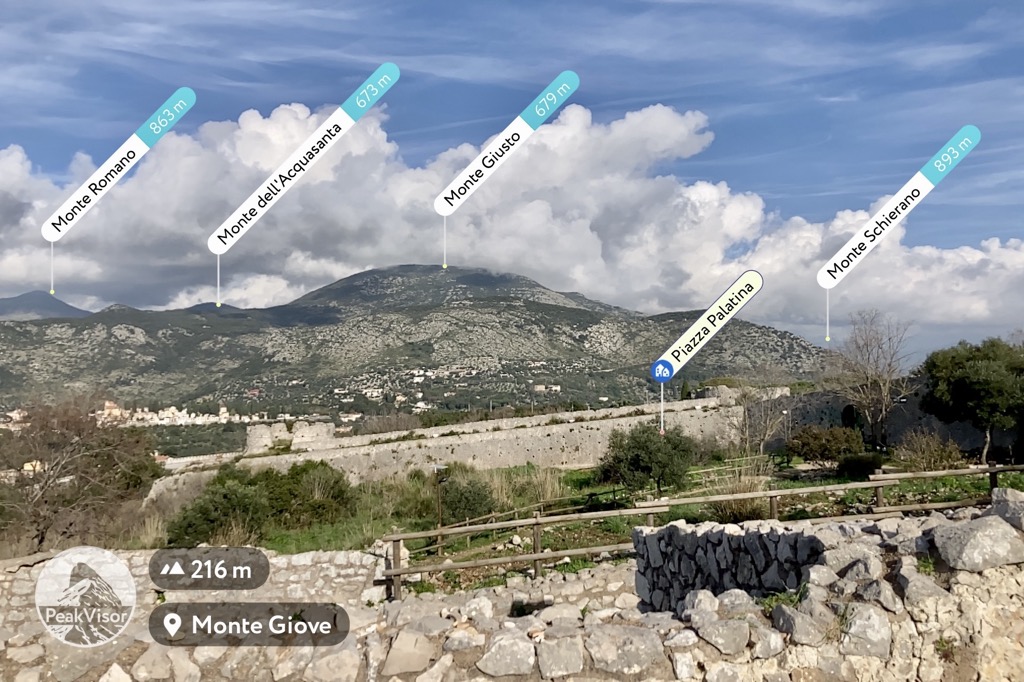
The bottom line: the Temple of Jupiter Anxur Natural Monument is a great place for a day or two-day overnight trip from Rome that is easily accessible and combines nature, architecture, and human history at once.
The easiest and fastest way to get to Terracina from Rome is by Trenitalia train. Important: there is no station in the city itself, the nearest one is Monte San Biagio or the next stop—the town of Fondi, which I also recommend visiting. From there you need the local Cotral bus. Total travel time, not counting waiting for the bus during the transfer, is about 2–2.5 hours.
Along with the architectural and historical attractions of the Temple of Jupiter Anxur Natural Monument, it is also a beautiful natural area with rich and unique flora and fauna.
Near the coast, the flora is represented at its core by the Mediterranean maquis—thickets of evergreen shrubs with stiff leaves and thorns, as well as small trees up to 2–3 m (6–9ft) high. In particular, these are mastic trees, strawberry trees, heather, myrtle, woodruff, and other species. Like everywhere else in the south, there are also many cypresses. A huge part of the local fauna is also olive groves with hundreds and thousands of trees. They cover literally the entire coast. In particular, during a hike through the mountains in the vicinity of the monument, about which I will talk a little further, you will see several of them. Be careful: to enter the groove you need the owner’s permission. A little farther north in the mountains, the trees grow taller and change to beech and mixed forests.
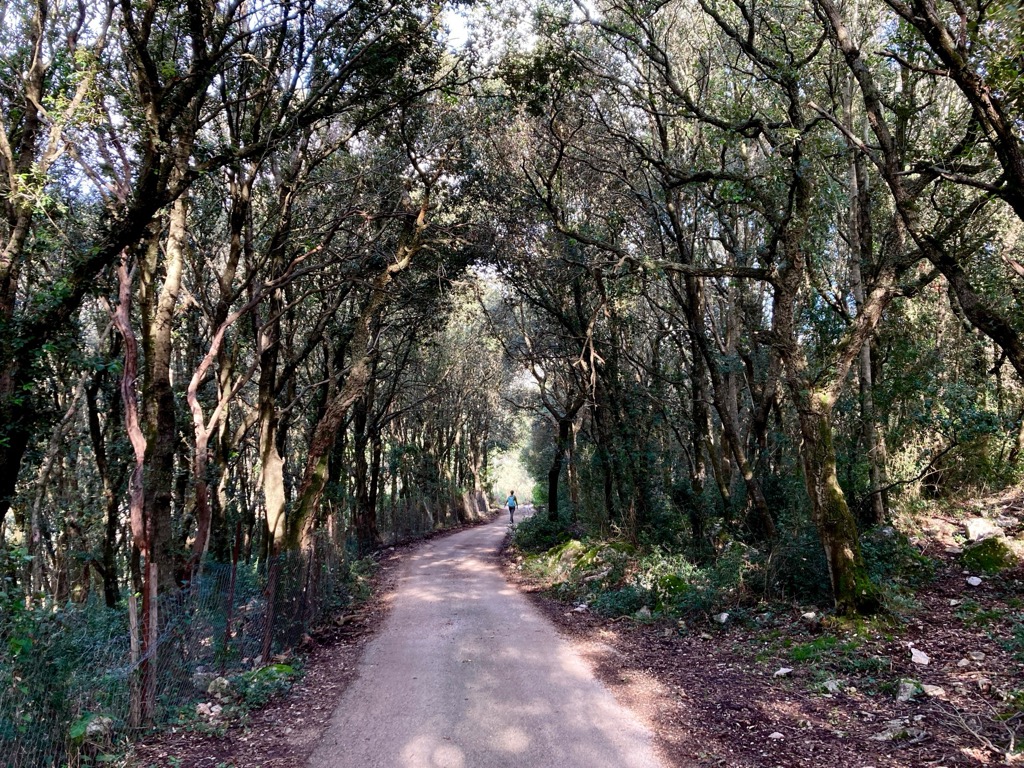
As for fauna, the present maquis is poor in animals because of the long history of human activity in the area. But you can still meet lizards, small rodents, foxes, deers, and many birds, including the eagle and falcon families, in the mountains.
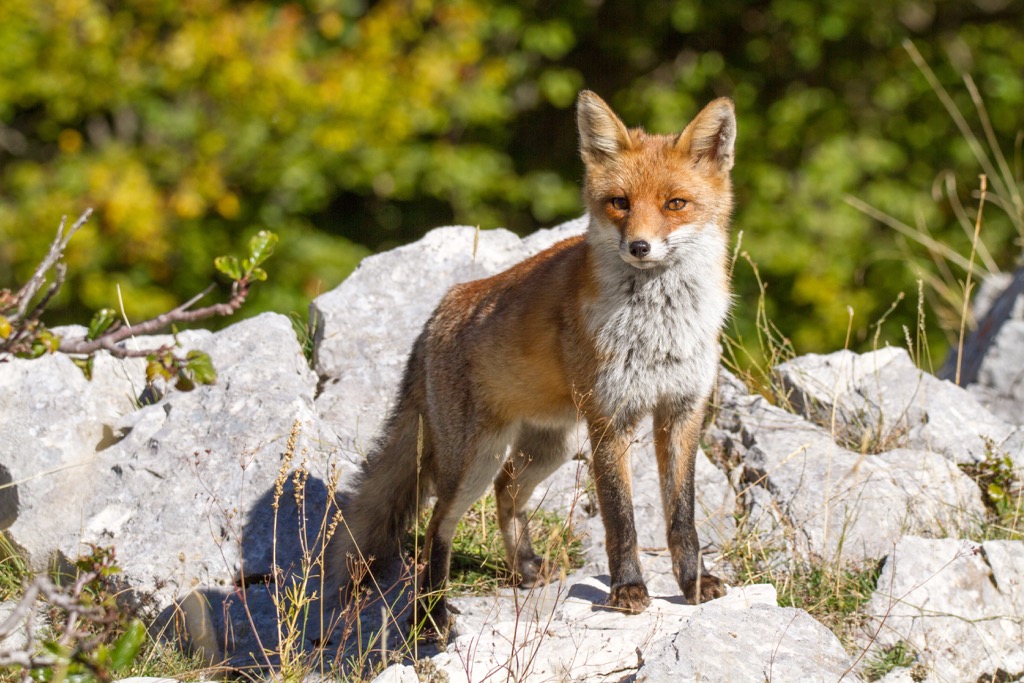
The mountains of Terracina belong to the Ausoni Mountains (Monti Ausoni), one of the three subranges or groups of the vast Volsci Mountains (Monti Volsci), covering almost the entire area from Rome to Naples. The highest peak of Ausoni is Monte Calvilli (1,116 m / 3,661 ft). The other two are the Lepini Mountains (Monti Lepini) to the west and the Aurunci Mountains (Monti Aurunci).
In turn, the Volsci Mountains range are one of the subranges of the larger Antiapennines of Latium or Latium Antiapennines (Antiappennino laziale), which are the foothills of the greater Apennines in their classification from east to west, that is, by longitude. In some sources, they are also called Preappennines or Subappennines.
Besides the aforementioned mountains visible from Monte Giove (229 m / 751 ft), just behind it you will find five more: Monte Leano (677 m / 2,221 ft), Monte Pannozzo (587 m / 1,925 ft), Monte Romano (863 m / 2,831 ft), Monte dell'Acquasanta (673 m / 2,208 ft) and Monte Giusto (679 m / 2,227 ft). All these peaks, as well as the Giove itself are part of the Ausoni Mountains and Fondi Lake Nature Park (Parco Naturale Regionale Monti Ausoni e Lago di Fondi) of the same name and can be hiked from the monument.

Given the small size of the Monumento Naturale Tempio di Giove Anxur, there is only one hiking trail through the archaeological excavation site itself. But the route can be easily increased to a real full-day hike if you head north to Monti Ausoni to reach Fondi Lake. So, let’s walk it.
To get to the temple, you have to go up from the central semicircular square of Terracina (Piazza Giuseppe Garibaldi) along Via Anxur and Via Panoramica. The latter is called so for a reason—it really offers great panoramic views of the city and mountains. You can also take a shortcut and go up to the monument from the city park "Villa Romana" somewhere in the middle of the walk.
Let me tell you right away: Plan more time for the entire hike, especially in the winter, when the days are short. Sunset here at 4:40 pm at the latest, but the sun sets behind the mountains earlier—on the trail it's about 3:40. It also only seems that the temple is close. In reality, the ascent to it will take you about an hour, and a walk around the site—at least another hour, and if you read all the information boards, even two hours. Total: you need at least two hours to see the site alone.
Entrance to the park is paid: 7 euros for adults. Students of “Archaeology” and other similar specialties are allowed for free, but the rest are not. Even I, with a master in Tourism Management, was left out.
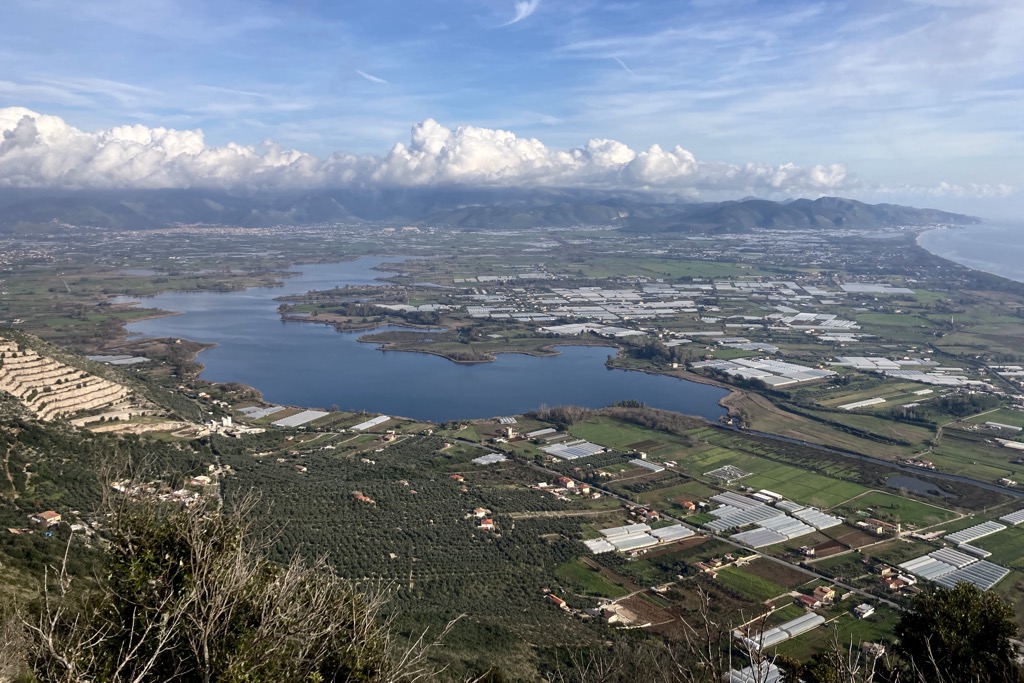
After visiting the natural monument, take the route called Ciana in the direction of the nearest large Monte Giusto. It is an old route that connects Terracina and Fondi Lake, and which the locals used to walk through the mountains in the absence of modern transport. At first, the road is a street, but then it turns into a real mountain path among the woods.
After the olive grove, follow the right slope of Monte Giusto along the Poiana trail. A little further along, in the middle of this entire day-hike, on a steep cliff, which can be reached by turning off the main trail, is the best lookout point on the whole trail, and the ideal place for a picnic after three hours of walking. It overlooks Fondi Lake (it’s also a natural monument) and the Aurunci Mountains. With PeakVisor, I’ve even managed to see Monte Petrella (1,533 m / 5,029 ft), the highest in the province of Latina.
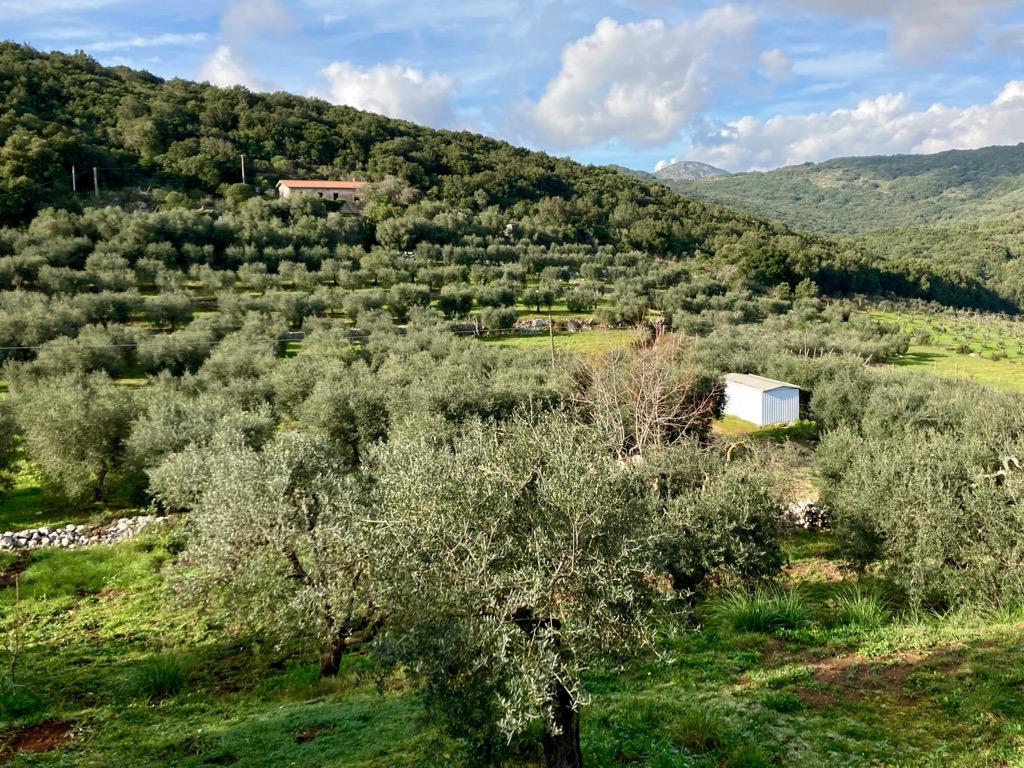
From here, the trail goes further up towards the radio towers, a kind of pass on your way, from which you need to turn right to the smaller Monte Pilucco (558 m / 1,830 ft).
The final part of the hike is the only and mostly straight path down to the lakeshore. Be careful—the trail is steep, with many rocks, and in some places heavily overgrown with trees. It’s best not to walk it right after the rain. At the very least, you’ll come back with absolutely muddy shoes and wet clothes.
Once down on the road, walk another kilometer (0.6 mi) or so north towards the town of Fondi to a bus stop where you can catch the Cotral bus into it or back to Terracina. They often run a few times an hour, but from the cities to other places in the province (let's say you are staying in Sperlonga or Gaeta south of the coast), there are longer breaks—up to 2–3 hours, especially on weekends and holidays.
Important: Cotral buses don’t run on Sundays.
All in all, it will take you about 4 hours of pure hiking or 13 km (8 mi). Including checking the Temple of Jupiter Anxur Natural Monument and stops along the way, as well as some orienteering, it will take about 5.5–6 hours or 20 km (12.4 mi). Also, be prepared for a slight elevation gain of up to 550 m (1,804 ft) for the entire hike.
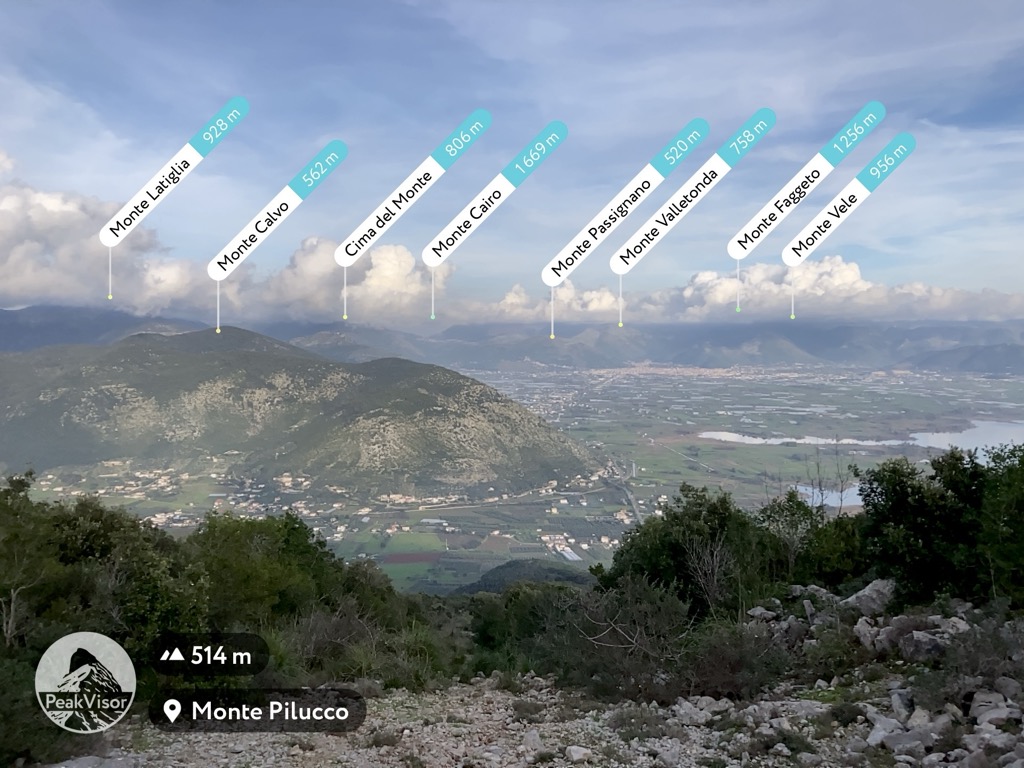
If you travel through the Lazio region in winter, you can not only go hiking, but also skiing and snowboarding.
The closest ski resorts to Terratina and Rome are in Monti Simbruini Nature Park north of the former and east of the latter. These are Campo Catino with more than 10 km (6 mi) of slopes and more than 5 ski lifts; Monte Livata–Subiaco-Monna dell'Orso with more than 8 km (5 mi) of slopes and more than 3 ski lifts; and Campo Staffi with more than 5 km (3 mi) of slopes and more than 3 ski lifts.
Check the Italy ski resorts map in the World Mountain Lifts section of the site. It includes information about open ski lifts / slopes in Italy in real-time with opening dates and hours. There are also year-round cable cars, funiculars, cog railways, aerial tramways, and all other types of mountain lifts.
At the entrance to Temple of Jupiter Anxur Natural Monument is a small Visitor Center where, in addition to buying a ticket (and free toilets — last on your way through the mountains), you can pick up a map and site brochures, and ask for advice about traveling in the region in general.
Before or after the hike, in Terracina itself, be sure to visit its official tourist center (IAT Terracina, Informazioni e Accoglienza Turistica—Tourist Information and Reception) at Piazza Municipio, 1, in the old town, or an info point at Viale della Vittoria, 31.
For a hike in the Temple of Jupiter Anxur Natural Monument you will easily find all possible types of accommodation in Terracina, Fondi or Sperlonga to the south along the coast — B&Bs, apartments, guest houses, hotels, villas, and more.
In the mountains of Ausoni, the nearest options to the site are B&B C'era Una Volta, AgriResort "Il Sentiero di Leano", and Alba Vacanze Monte e Mare.
In addition, there are many campsites along the coast. Here are at least five major ones (from west to east): Camping Blumen Terracina, Camping Village Settebello, Tahiti Club Camping, Campeggio La Califfa, Camping Nord Sud.
On Fondi Lake, check two agriturismos: Tenuta Mirabello and Le Folaghe.
A general recommendation to look for lodging: during the low winter season from mid-October to April-May, many places, especially in the mountains and right on the coast outside the cities, may not offer all the services listed on the website or may simply be closed. Inquire about this.
The Temple of Jupiter Anxur Natural Monument and the city of Terracina are synonymous. Therefore, many other attractions of the city remain in its shadow. But there is a lot to see in the city, given that the Via Appia, the main of the vast network of famous long Roman roads linking the different ends of the Empire, runs through it.
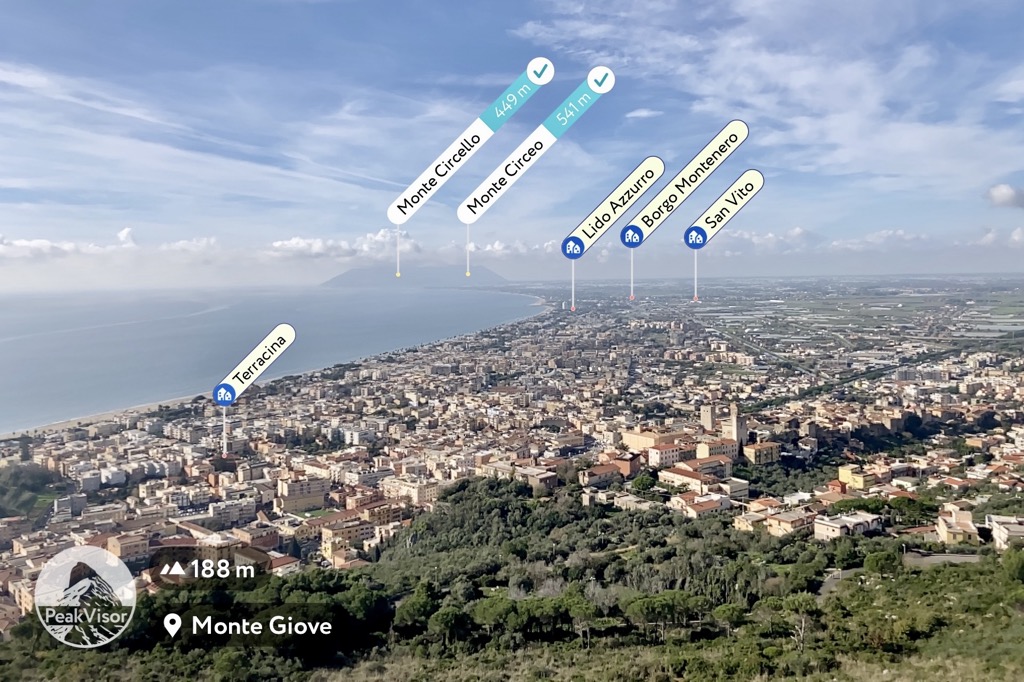
First, or rather, second, after the temple, the city has an Old Town with many Roman ruins, including the forum, several arches, the Roman theater—in other words, almost everything there is in Rome itself, only in miniature. But even more impressive is that the remains of monumental Roman constructions are mixed up with medieval churches including the Terracina Cathedral and early and mid-20th century buildings like the Palazzo Comunale or the Municipio.
Thirdly, there is the promenade (Terracina lungomare), which is several kilometers (miles) long, with a separate bicycle lane. This is also where the city’s main fish canteen, Centro Ittico da Ernesto Terracina, is located. In it, you can have a mix of fish dishes for just about 20 euros.
Fourthly, the city’s main shopping street, Via Roma, is lined with orange trees whose fruits become edible in early January and grow until May. If you started there but not from the sea, turn to it via Viale della Vittoria through Ristorante Pizzeria La Focaccia—it is the best in town and offers a 100% authentic Neapolitan pizza that you don’t have to go to Naples for. I've been to both.
Fifth, Terracina is a relatively large port (where there are several more fish markets, take-and-goes, and restaurants), which is connected to other cities on the coast as well as the Pontine Islands, where you can sail during the summer tourist season with an excursion. From the port, you can return back to the main square via Via Tripoli through the best pastry in the town—Pasticceria Creme Caramel.
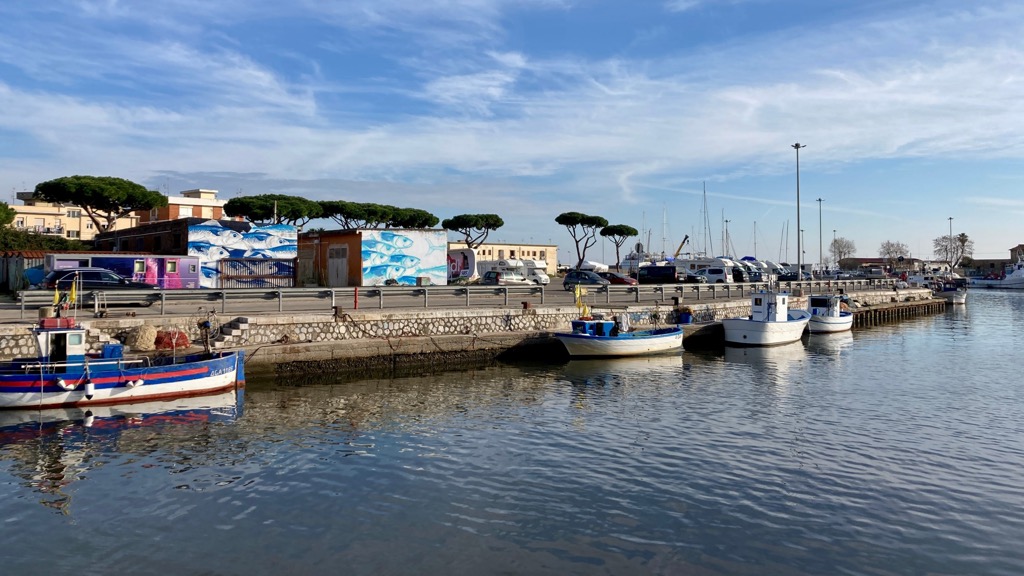
Explore Monumento naturale Tempio di Giove Anxur with the PeakVisor 3D Map and identify its summits.







